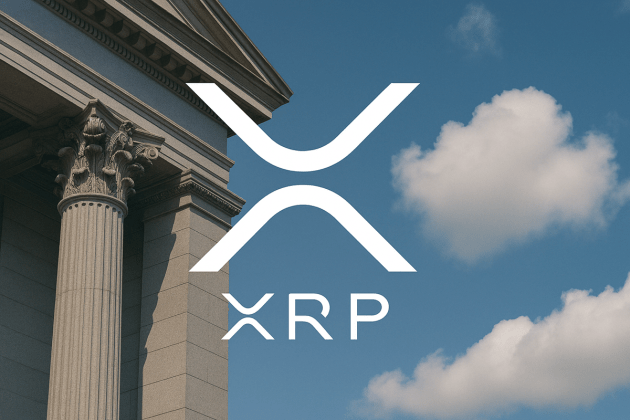Analyzing cryptocurrency
Crypto adoption rates continue to rise, and for a good reason. They're a revolutionary way of making financial transactions, and they hold a lot of promise for the future. If you're new to the world of cryptocurrencies, it can be tough to understand the metrics used to measure them.
It is important to understand the basics of how these digital currencies work before you decide whether or not to invest. In this article, we'll look at the most common crypto metrics and explain what they mean.
Market capitalization
Market capitalization (or market cap) gauges the relative size of a cryptocurrency. To calculate it, you simply have to use the following formula:

For example, if a cryptocurrency is priced at $10,000 per unit and there are a total of 20 million coins in circulation, the market capitalization for that cryptocurrency would be $200 billion. This metric is important because it gives you a sense of the size of the cryptocurrency market. It can help you determine whether a particular cryptocurrency is overvalued or undervalued.
Funding rates
Funding rates are payments made on a regular basis between traders to keep the price of a perpetual futures contract close to the index price. A perpetual futures contract is an agreement to buy or sell an asset where the contract doesn't have an expiration date. Positions may be kept for as long as the trader wants, but the trader must pay holding fees, also known as the funding rate.
Funding rates are proportional to the number of contracts and show traders' sentiments in the perpetual swaps market. Positive financing rates show that long-term traders have the upper hand and are willing to pay short-term traders for funding. Negative funding rates suggest that short-term traders have the upper hand and are willing to compensate long-term traders.
Open interest
Open interest looks at the number of contracts being traded in the market at a given point in time. It is another way of gauging interest in the crypto market. One of the most widely used volume-based indicators, it measures the total number of open positions (both long and short) held by market players at any particular time.
The calculation is arrived at by adding the total number of open trade positions and subtracting the total number of trades that have been closed. This metric is important because it's a broad indication of capital inflows into markets. As more money comes in, the amount of open interest rises, and vice versa.
Stablecoin flows
Stablecoin flows are a metric that captures the overall trend of stablecoin volume and activity. By analyzing this data, one can get a better understanding of the overall investor sentiment around stablecoins.
Investors may shift into stablecoins as a haven while still offering themselves the quick flexibility of re-entering cash back into the cryptocurrency market if there is a market sell-off and they anticipate the value of their crypto investment to drop.
Exchange flows
Exchange flows are a metric used to measure the movement of cryptocurrencies in and out of an exchange. Specifically, it looks at the number of coins deposited into or withdrawn from exchange wallets.
When it comes to exchange flow, there are three different metrics to consider:

Fear & Greed Index
The Fear & Greed Index is a broad-based crypto indicator that measures investors’ emotions. Alternative.me, a software firm, created the Fear and Greed Index for Bitcoin (BTC) and other popular cryptocurrencies.
The index is based on weighted data sources to generate a score between 0 (extreme fear) and 100 (extreme greed) that indicates the general sentiment of the cryptocurrency market.

The Fear and Greed Index, and other crypto asset indexes, monitor market sentiment every day at midnight Greenwich Mean Time, providing a view of market emotion and sentiment. The Bitcoin Fear and Greed Index — like other indexes for the various crypto assets — is based on the idea that cryptocurrency investors tend to be collectively volatile and emotional.
Network Value to Transactions ratio (NVT)
The NVT ratio describes the link between market capitalization and transfer volume. A particular perspective on NVT is that it compares two of Bitcoin's main value propositions:
Market Cap: Store of Value
Transfer Volume: Settlement/Payments Network
Users can see the relative balance between these two components using the NVT ratio with the following broad framework:

Realized capitalization
Realized capitalization or realized cap is a variant of market capitalization that assigns a value to each unspent transaction output. Rather than its current worth, the value at which it was last transferred is used as the basis. As a result, it represents the realized value of all the coins in the network rather than the market value.
The impact of lost and long-dormant currencies is reduced by the realized cap, which weighs coins according to their actual presence in a chain's economy. When a coin that was last transferred at a much lower price is spent, the coins are re-valued to the current price, increasing the realized cap by a corresponding amount.
Bitcoin heat map
The Bitcoin heat map is based on the idea that the price of Bitcoin has traditionally found its cycle bottom around its 200-week moving average. This cryptocurrency indicator looks at past price data and creates a color heat map based on the percentage of increases over the 200-week moving average (MA).
Long-term Bitcoin investors can pinpoint trends by looking at the monthly color changes on the Bitcoin heat map. Orange and red dots on the price chart, for example, have traditionally been ideal times to sell Bitcoin since those colors suggest that Bitcoin is overbought in contrast to its price over the previous 200 weeks.
On the other hand, when the price dots are purple and close to the 200-week MA, it's usually a favorable moment to purchase Bitcoin.
Bitcoin Rainbow Chart
The Rainbow Chart is named for the eight rainbow-colored bands that divide up Bitcoin price ranges into categories such as "Fire Sale," "Accumulate" and "HODL." The Rainbow Chart method allows investors to spot patterns that reveal when Bitcoin is at its most favorable point in the cycle, based on trends seen throughout previous cycles.

However, it's worth noting when looking at this long history of data that the eight bands do not function as precise signals to buy and sell. Especially in crypto, past performance is not a surefire indicator of future results owing to market volatility, among other factors.
On-balance volume (OBV)
On-balance volume (OBV) is a technical indicator used to measure the momentum of a cryptocurrency. It is a technique for predicting price changes in assets by measuring the element of volume change. OBV is a compounding indicator that adds to the volume on up days and takes away from it on down days to assess purchasing and selling pressure.
Per the OBV principle, when an asset's price closes higher than its previous close, its 24-hour volume is considered "up-volume." When the price closes lower than its previous close, it is termed "down-volume."
A positive OBV reading suggests more buying than selling pressure, while a negative OBV reading suggests that there is more selling than buying pressure.
Accumulation/distribution line
The accumulation/distribution line depicts the relationship between an asset's price and the proportion of buyers and sellers in that market. The depiction allows traders to decide if the market is bullish or bearish by pinpointing any divergence in the price and the indicator.
A rapid drop in the value of an asset, followed by a rise, might indicate that demand is on its way up. This indicates that sellers are losing control and buyers are gaining power.
Average directional index (ADX)
The average directional index (ADX) is a technical indicator used to measure the strength of a trend. The trend may be either up or down, and this is indicated by two additional indicators: the negative directional indicator (-DI), which measures the presence of a downtrend and the positive directional dndicator (+DI), which measures the presence of an uptrend.
The ADX, therefore, frequently includes three separate lines. These are used to determine whether a trade should be taken long or short (or if it should be taken at all).
Aroon indicator
The Aroon indicator is a technical indicator that may be used to detect price trend changes as well as the strength of that trend. The notion is that strong uptrends will see new highs frequently, whereas strong downtrends will see new lows regularly.
The indicator is composed of the Aroon up and down lines:

The Aroon up and down lines move between zero and one hundred. Values near one hundred suggest a strong trend, while values around zero indicate a weak trend.
Moving average convergence-divergence indicator (MACD)
The moving average convergence divergence (MACD) shows the link between two moving averages of an asset's price. The MACD, in general, aids investors in determining whether a price's bullish or bearish trend is strengthening or waning.
It is calculated by taking the difference between the 26-period exponential moving average (EMA) from the 12-period EMA. The “signal line,” which equates to nine days’ worth of EMA, acts as a trigger for buy and sell signals. Traders can purchase the asset once the MACD goes above the signal line. Once it goes below the signal line, traders can either sell or short the asset.
Relative strength index (RSI)
The RSI is a technical analysis indicator that looks at the scale of recent price fluctuations to determine if a stock or other asset is overbought or oversold. An oscillator that ranges from 0 to 100 represents RSI.
According to traditional interpretation and usage, values of 70 or higher on the RSI, signal that a security is overbought or overvalued. As such, a corrective price pullback or trend reversal may be close at hand. Meanwhile, a reading of 30 or less on the RSI suggests that the security is oversold or undervalued.
Stochastic oscillator
A stochastic oscillator compares a security's closing price to a range of its prices over a given period. The sensitivity of the oscillator to market changes can be reduced by changing the time frame or taking a moving average of the result. A defined range of values from zero to hundred generates overbought and oversold trading signals.
The stochastic oscillator is range-bound, which means it always oscillates between zero and one hundred. As a result, it can signal whether conditions are overbought or oversold. Values over 80 are traditionally regarded as overbought, while readings under 20 are considered oversold.
The Puell Multiple crypto indicator
The Puell Multiple is a metric that compares Bitcoin miners' revenue to Bitcoin's price. This metric approximates the amount of sell pressure generated by miners selling Bitcoin rewards to pay fixed expenditures such as mining hardware and electricity.
Traders typically use the Puell Multiple to estimate the health of miner revenues. For instance, a high Puell Multiple may indicate low sell pressure whereas a low Puell Multiple may indicate high sell pressure. Miners, especially huge institutional miners, often have access to large amounts of Bitcoin. As such, understanding their pressure to sell can reveal short-term price patterns before they are visible in the markets.
The stock-to-flow (S2F) crypto model
The S2F model is a widely-used indicator that shows the ratio between an asset’s current stock and new production flow. This ratio is usually stated as a percentage-based annual growth in supply, or the number of years required to double supply at the current production rate.
The S2F concept is based on the idea that scarcity is the source of value. In Bitcoin, for example, the current stock is the circulating quantity of Bitcoin, while the flow of fresh production refers to newly minted Bitcoin. The calculated S2F ratio represents the number of years it would take to double the amount of Bitcoin produced at current output levels.







